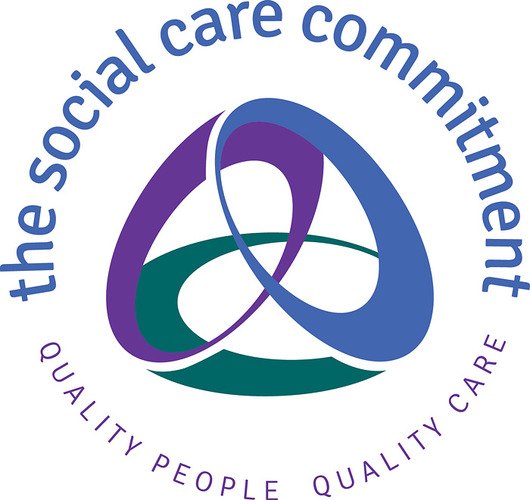Table of Content
- No 10 hires healthcare lobbyist and prompts privatisation concern
- Keeping Complex Care Clients and their Families Informed
- Bethlehem is ready for its long Christmas season
- Problems With Home Care Agencies
- Enjoy the convenience of having The Sunday Post delivered as a digital ePaper straight to your smartphone, tablet or computer.
- Top 10 Complaints from Home Care Clients
- Problem #5: They don’t communicate well.
Agencies also reported using new virtual means to hire, onboard, and train workers. The COVID-19 pandemic is reshaping the provision of home care services and policy. In addition, early reporting suggested consumers might abstain from care due to fear of infection, which would decrease agency census and impact their financial sustainability. Staff were leaving employment, recruiting new staff was difficult, and agencies had to scramble to secure supplies and develop new training and protocols. More recent reports have highlighted how home care agencies have rebounded and are now viewed as an important means for reducing institutional care and preventing hospitalizations.

Communication between care providers poses difficulties in many Canadian health care settings. The Care Quality Commission has written to 84 local authorities telling them as many as 9,300 elderly and vulnerable people are at risk of losing their home care services after 30 November. The CQC has written to the local authorities across England telling them there is a “credible risk” that Allied may have to cease services when a loan payment becomes due at the end of the month. Not only do I have to pay for a month that I'm not using, but I was unable to find someone for 2 months and still paid for it.
No 10 hires healthcare lobbyist and prompts privatisation concern
We wanted to understand how stakeholders thought these policies have worked, what improvements could be made, and what policies and practices hold promise for the future. As a result of states not recognizing home care workers as "essential workers," access to personal protective equipment, testing, and vaccines were significantly delayed during the pandemic. I really appreciate it that you mentioned that the best in-home care services provide clients with on caregiver to ensure a single point of contact to avoid miscommunications and to ensure responsible care. This is just what my parents want for my grandparents to enjoy with their professional caregivers.

Thus, make sure that the caregiver is giving quality care to the older adult. Your family member needs to be 100% satisfied with the caregiver. It really helped me when you said how clients are getting frustrated with having caregivers assigned to them who wait until they are told what to do and are discovering that their requested duties are not being accomplished.
Keeping Complex Care Clients and their Families Informed
The financial disaster at Four Seasons could not be a louder warning that care for the elderly is in deep crisis. It is the second time in less than a decade that tens of thousands have been plunged into uncertainty by a care home firm running aground. The care home sector is facing a £3.5billion funding shortfall, and there have been repeated warnings that operators are buckling under the pressure of rising costs and cuts to council funding. The firm insisted the decision by two of its holding companies to call in administrators did not mean its homes were earmarked for closure as the operating companies – which run the homes – have not collapsed. Advinia was set up by Sanjeev Kanoria and his wife Sangita 20 years ago.

Kanoria has numerous business interests globally, including the ownership of the Austrian Anadi Bank, which he acquired in 2013.
Bethlehem is ready for its long Christmas season
In these cases, sharing timely health information with clients – in the form of explanations, instructions, and reminders – is critical. It can also be difficult – no worker can be with one individual all of the time. Of course, some complex care clients can exercise more autonomy than others. Whether a person is able to make all of their own decisions or not, their family members may play a very significant role in their care. In complex care, this would mean starting with a complete understanding of a client’s conditions and how they’re interacting. It would mean ensuring that everyone providing care understands this information – and tracks how changes over time.

Therefore, before starting a home care agency, it is crucial to appoint reliable people. Have some extra staff so that in case of turnouts you can send another staff to fulfill the client’s requirement. Providing one-on-one help to senior citizens or people who are disabled or face some severe health issues is the primary job. A patient can have more than one caregiver at a time according to their requirement.
Home care, on the other hand, refers primarily to non-clinical services, such as supervision and companion care, meal preparation, and transportation. Home care is not paid for by Medicare and is optionally funded by state Medicaid plans. Agencies addressed these challenges through changes to their own policies and practices as well as by taking advantage of changes to federal and state policies and regulations.
I went in yesterday and had to convince the the lady I was there to help that it was ok to ask me to do something for her. It is over whelming because our job is to make these peoples lives easier.If everything is done, then our job is to be a companion..depression can cause illness and people who are alone suffer from lack of companionship. Watching tv and playing with our phone is not our job. All it takes is a few lousy workers and everytime I walk into a house to work..they are expecting me to do nothing.
The Educator can customize which “homework” the patient receives. A number of “Core” educational modules have been identified which cover the basic COPD education from the LWWCOPD program. Additionally, optional modules can be used to respond to patient needs. The timeline is fully customizable, although we recommend to have education sessions every 2-weeks during the “active” phase of education.

Agencies also reported using virtual means to hire, onboard and train workers. Workforce shortages that have long existed in the home care and home health industries were exacerbated by the COVID-19 pandemic. Difficulties obtaining PPE caused some workers to leave employment due to fear of becoming ill.
Clients are being left for the day or weekend without hearing from anyone from their agency, panicking family members who relied on someone to be there for them. As caregiver shortages continue, lack of staffing makes it difficult to ensure there is always someone scheduled to take care of a client during their desired hours. As caregivers are often the only social interaction a client receives, caregivers have the unique opportunity to not only help their clients feel less alone as they work, but to build life-changing relationships while on the job. The demand for home care services is still on the rise and this trend isn’t predicted to slow down anytime soon. With such a boom in the industry, it’s hard to imagine that a home care agency wouldn’t thrive, but the truth is that many home care businesses fail to stand out from the crowd and reach profitability and there are many reasons why.


No comments:
Post a Comment